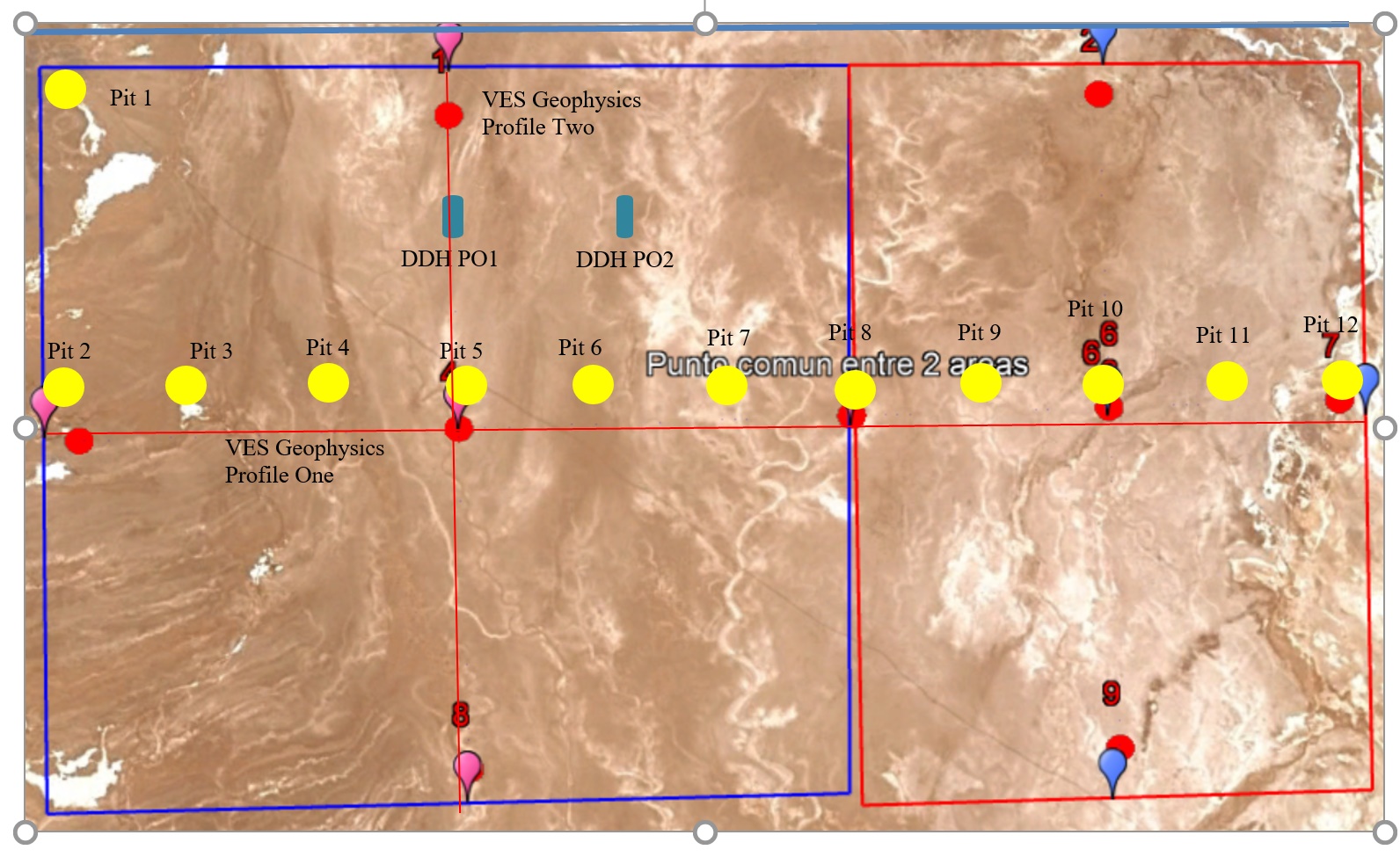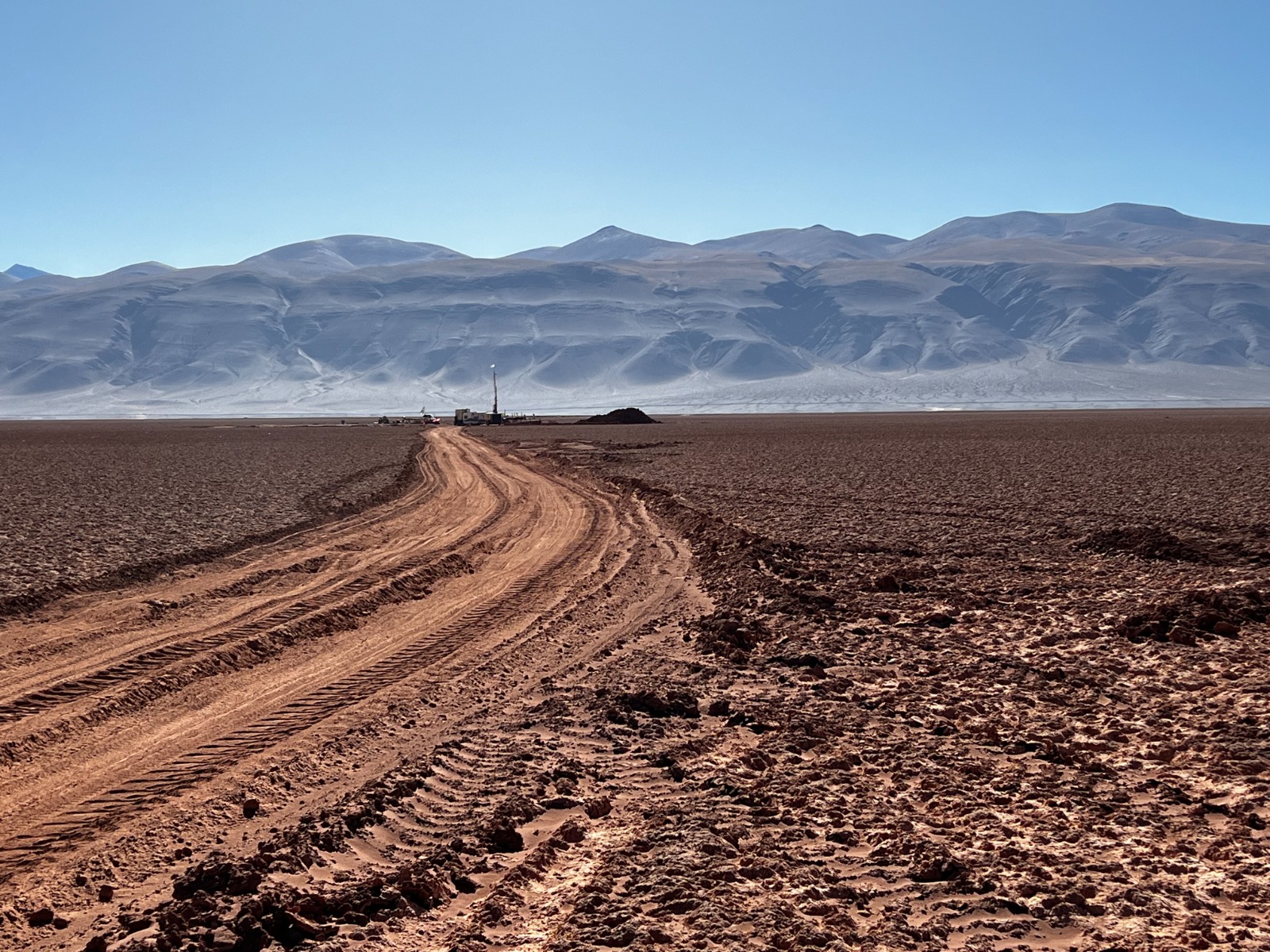Pocitos Salar - Argentina
Exploration Drill Program 2018
Pocitos Salar -
Argentina
Spey is pleased to announce an exploration drill program on Pocitos Salar in the coming months.
The exploration area is located in the Department of Los Andes, Salta province. It is accessed starting from the city of Salta by national route No. 51 passing through the town of San Antonio de Los Cobres, then continues until the junction with provincial route No. 27 - in the vicinity of Rincon Salar, some 273km from Salta.
Alluvial plains of the eastern edge of the Salar de Pocitos in the background, outcrops of Ordovician sediments
+ Project Location
The exploration area is located in the Department of Los Andes (Figure 1). It is accessed starting from the city of Salta by national route No. 51 passing through the town of San Antonio de Los Cobres, then continue until the junction with provincial route No. 27 - in the vicinity of Cauchari - continue along this until the town of Estación Salar de Pocitos.

Alternative 1: From Estación Salar de Pocitos, follow provincial route No. 17 for a distance of approximately 15 km, bordering the salar to the east, until arriving at the area.
Alternative 2: From the Salar de Pocitos station, follow provincial route No. 27 and after traveling approximately 12 km, you access the area where the mines are located.
The area of the Mines that make up this Project is defined by the following Gauss Kruger Postgar System coordinates.

+ Area to be Used
The total area requested in this Project is: 600 hectares.
 Fig 2 shows geophysics (red lines) sampling in yellow dots.
Fig 2 shows geophysics (red lines) sampling in yellow dots.
+ Main Geomorphological Units
The Puna, in general, is made up of elevated blocks separated by elongated endorheic basins, which are occupied by evaporite deposits: the salt flats. The mountain ranges have a meridian orientation and their shape responds to uplift in blocks through reverse faults. In the area where the mines are located, the Pocitos and Pozuelos salt flats stand out. Both basins are separated from each other by the Cordón de Pozuelos. The Cordón de Pozuelos is made up mainly of rocks of Ordovician age, which show a slight metamorphism. The predominant geoforms show the effects of differential erosion, highlighting the quartzite rocks for their greater relative resistance, while the shales are more easily eroded. At the foot of the mountain range numerous coalescing alluvial cones can be seen.

Alluvial plains of the eastern edge of the Salar de Pocitos in the background, outcrops of Ordovician sediment.
To the north stands out the massif of the Quevar Volcanic Complex. There the composite volcanoes are united and form multiple volcanoes. Rounded forms are found, resistant to erosion and, in some sectors, such as the Azufre volcano, landslide phenomena are observed. The sedimentary Tertiary deposits, distributed in small outcrops, show very low resistance to erosion, so they do not form outstanding reliefs.
+ Evaporitic Deposits
In the study area, the Pocitos and Pozuelos salt flats stand out. Generally, the main component of the evaporites is halite, however some salt flats have ulexite deposits such as. wells; the Pocitos salt flat in its southern part contains accumulations of sodium sulfate, in its middle part sodium chloride predominates and towards the north it presents manifestations of ulexite.

+ Current Clastic Deposits
Current clastic deposits correspond to sediments of different origin according to their location with respect to positive reliefs and endorheic basins.
Above 4,500 masl there is evidence of the last glaciation, which is why moraine deposits are found. At lower altitudes, thermoclastism and cryoclastism have generated a large amount of colluvial material that covers the areas of positive relief.
On the slopes surrounding the salt flats, the rivers in the area have formed cones and alluvial fans, most of which are non-functional today. Towards the lower areas, fine sediments predominate, forming the beach environments of the edges of saline bodies.


